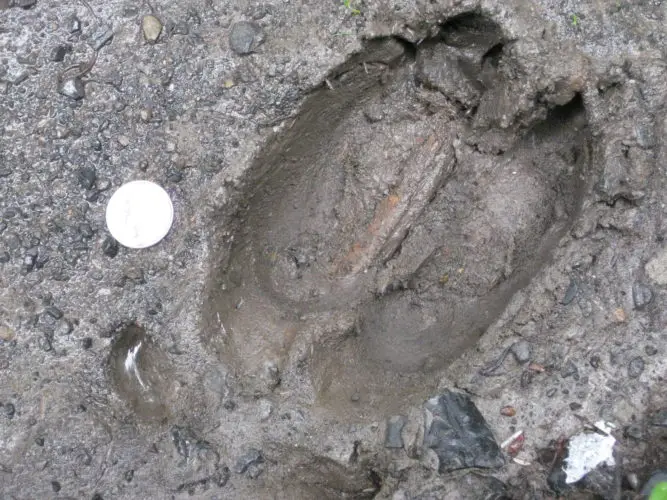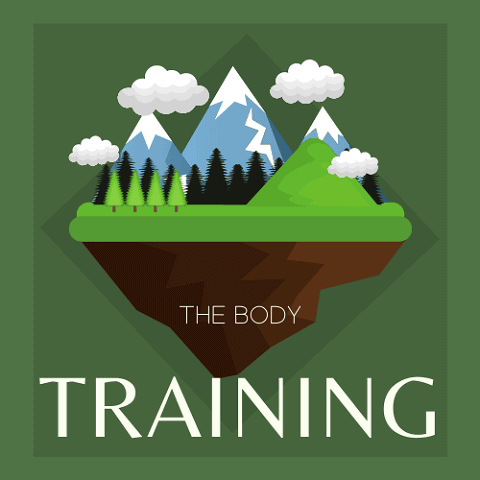Fact checked by Steven Lines, lifelong Hunter, and Outdoorsman .
.
In many areas, both elk and cattle will live side by side. In places such as these, it is important to distinguish the tracks between the two. There are many key differences between the two, and this guide will help to ensure that you are better prepared for the next time you head into the elk woods and find cattle in the area.
The most significant difference between elk and cattle tracks is the size. Cattle have much larger feet, resulting in larger tracks. Elk tracks, even those made by mature bulls, are smaller and elongated when compared to those made by cattle.

In addition to size, a few other differences can help you distinguish between elk and cattle tracks. Knowing and identifying these differences can help you increase your chances of finding the elk you are looking for or wasting your time in an area overrun by herds of cattle.
In this post, we'll cover:
How Do I Identify Elk Tracks?

Elk tracks are generally around four inches long and much larger than the tracks of similar animals such as deer or antelope. Because elk are the second largest member of the deer family in North America (second only to the moose), they are generally straightforward to distinguish from other wild animals.
Elk walk with a longer gait than other animals, so their tracks may be spaced out a few feet from each other. Tracks are best found in softer materials without vegetation, such as mud, sand, or snow.
This distance is usually around one and a half to three feet in length when walking and even further when galloping or running at full speed.
Elk tracks will also have curved toes with tips that are slowly tapered. The two points will point forward and towards each other. Their front hooves are larger and wider than the back, and there are size differences between bulls and cows.
Elk will often travel in a single file line to better conceal their numbers and scent from predators.
How Do I Identify Cattle Tracks?

Cattle are widespread in many elk hunting areas. These cattle are released into public lands on grazing rights to let them feed during some parts of the year. Although they make tracks similar to elk, many noticeable differences will help you easily and quickly distinguish between the two.
Cattle tracks are very large. Depending on the age and breed of the cattle, a single track could be anywhere from four to eight inches in diameter. The average size will be five to eight inches, showing just how large their hooves are. This is much larger than any other naturally occurring species in the woods.
Cattle tracks are also extremely round, more so than wildlife. Because cattle have no predators, they do not have small feet and long legs better suited for running. Instead, they are big and heavy creatures standing around feeding all day.
This results in giant tracks often deep into the ground where they stand.
What Are the Differences Between Elk and Cattle Tracks?
An easy way of identifying an elk track compared to a cattle track is the mark made by dewclaws. Elk have two dewclaws on each foot, marking the ground if they are running or walking through deep mud, dirt, or snow. Cattle, on the other hand, will not leave such a mark.
The shape is the biggest giveaway of an elk track (besides the overall size). Elk tracks are noticeably more elongated than cattle tracks. While they are rounder than a deer track, they are nowhere near as circular as domesticated cattle.
By looking at the track’s size and shape, you can better determine if elk or cattle made the track. The age and location of the track will also come into play to help determine the difference. Cattle prefer wide open spaces and meadows where they have room to roam.
While elk love these areas, they also prefer to hide in thick forests and steep canyons that cattle will mostly avoid. If you find tracks in these types of areas, they are most likely going to be made by elk.
Other Tracks That May Look Like Elk and Cattle Tracks
In addition to elk and cattle, there are a few other species out in the wild that can make tracks that appear similar. Deer are the most common and can be mistaken for elk or even cattle in some cases.
Antelope and moose also appear similar to elk and cattle, and you will need to rely on the size differences to help quickly distinguish between the two.
Moose tracks will be larger than elk or deer but not as large as cattle. They will not be as rounded as cattle. Antelope are among the smallest tracks and will be smaller than elk and deer.
Besides the wild species that appear similar, other domesticated animals such as sheep, goats, and even llamas can make tracks that can be confused with elk tracks.
These domesticated animals can also be found in elk hunting areas, and if you are not careful, you can easily mistake some of these tracks for elk.
Final Thoughts
Elk and cattle are often found in the same areas, so it is not uncommon to figure out if cattle or elk made the track you are looking at.
With enough practice and a little thought, you will soon find that distinguishing the differences will become easier, and you will get quicker and quicker at it.

Steven Lines is a hunter and outdoorsman from Safford, Arizona, USA. Since he was a child, he has been hunting and fishing and has over 20 years of outdoor experience. Steven works as a hunting guide in Arizona during his spare time and runs a Youtube channel dedicated to sharing his outdoor adventures with others.
dedicated to sharing his outdoor adventures with others.
Sources
- https://goneoutdoors.com/identify-elk-tracks-2067953.html

- https://www.fieldandstream.com/story/hunting/hunting-tips-to-help-you-track-an-elk/

- https://www.elk-hunting-tips.net/elk-sign.html

- https://flic.kr/p/bHtmL

- https://flic.kr/p/8cZZAJ

